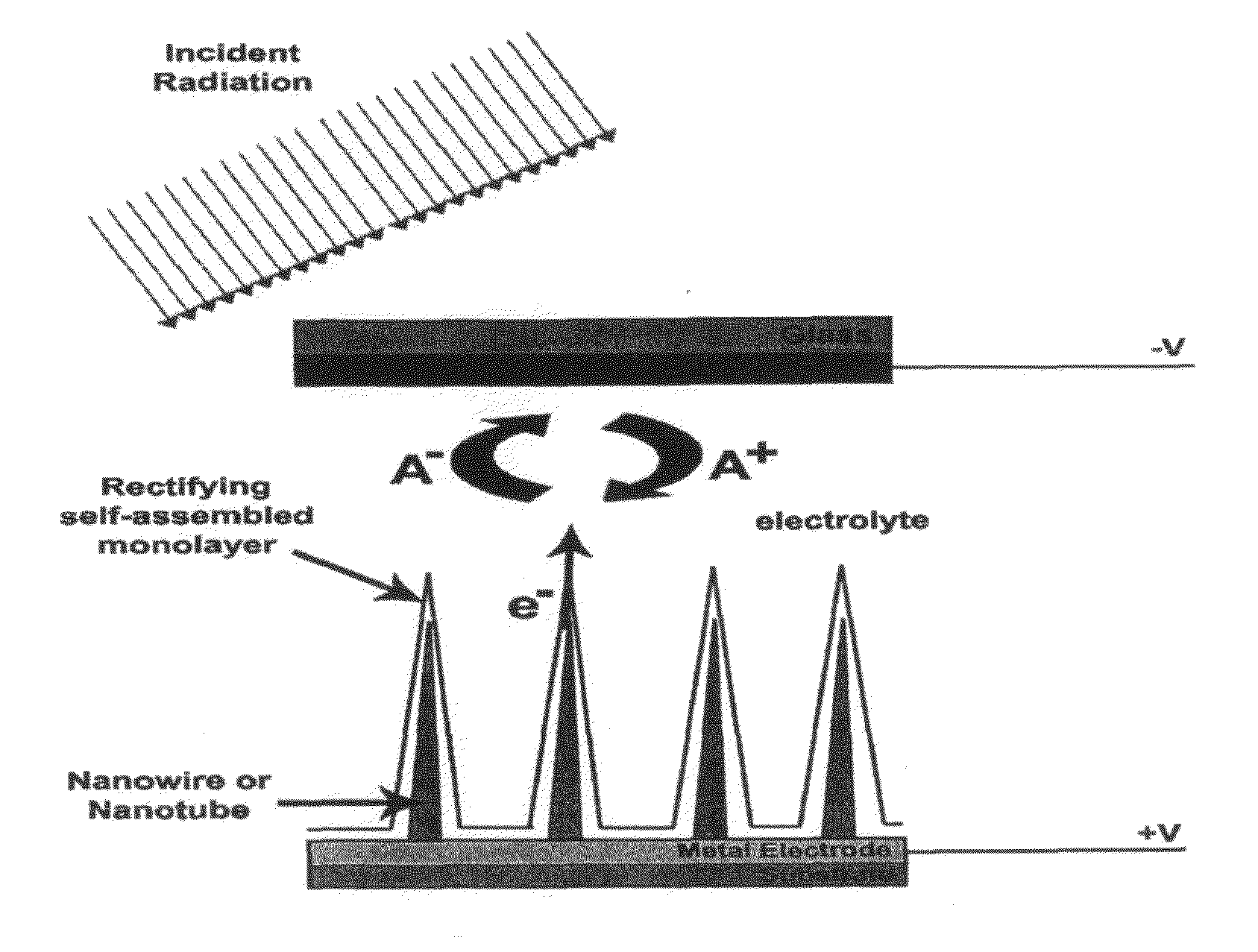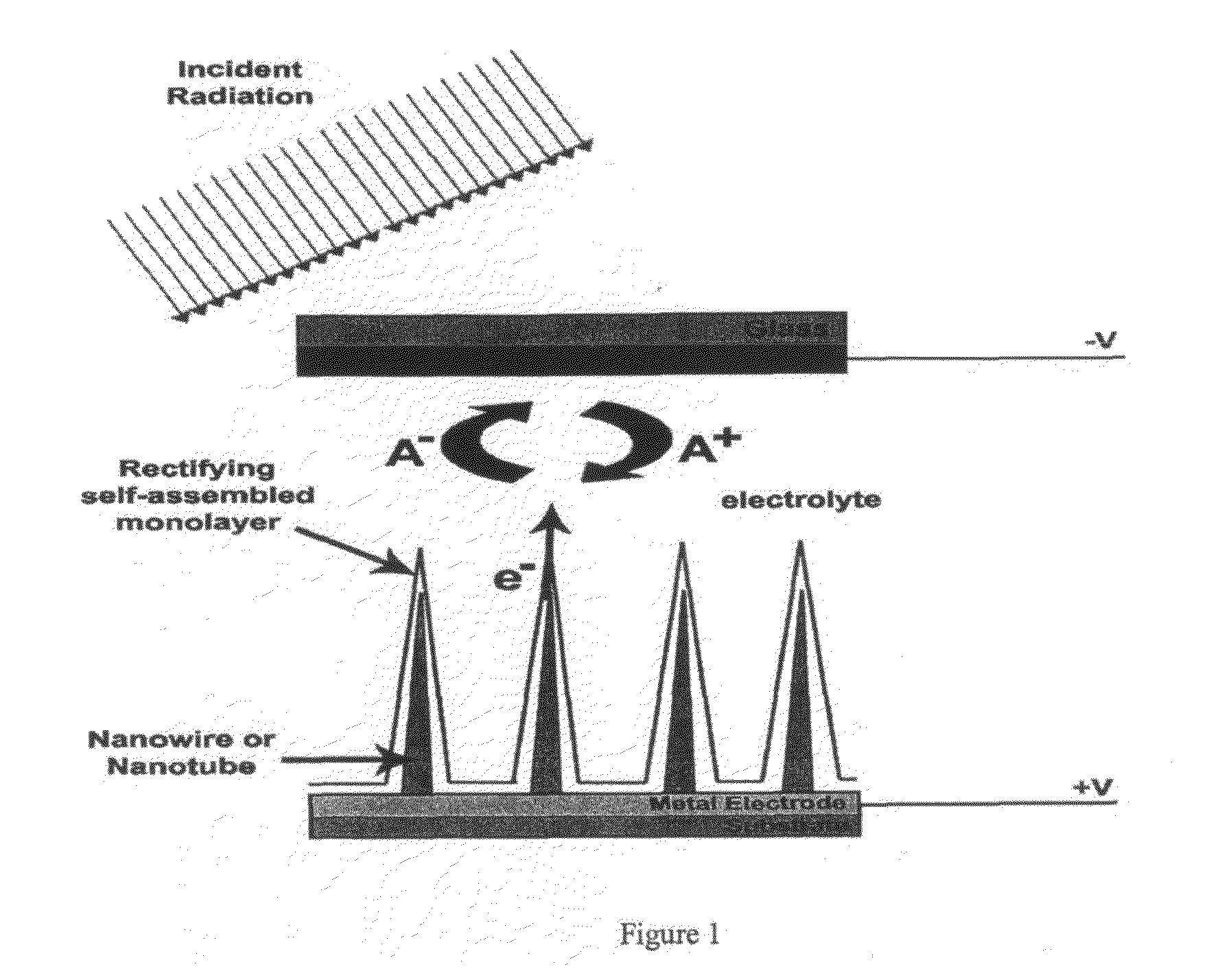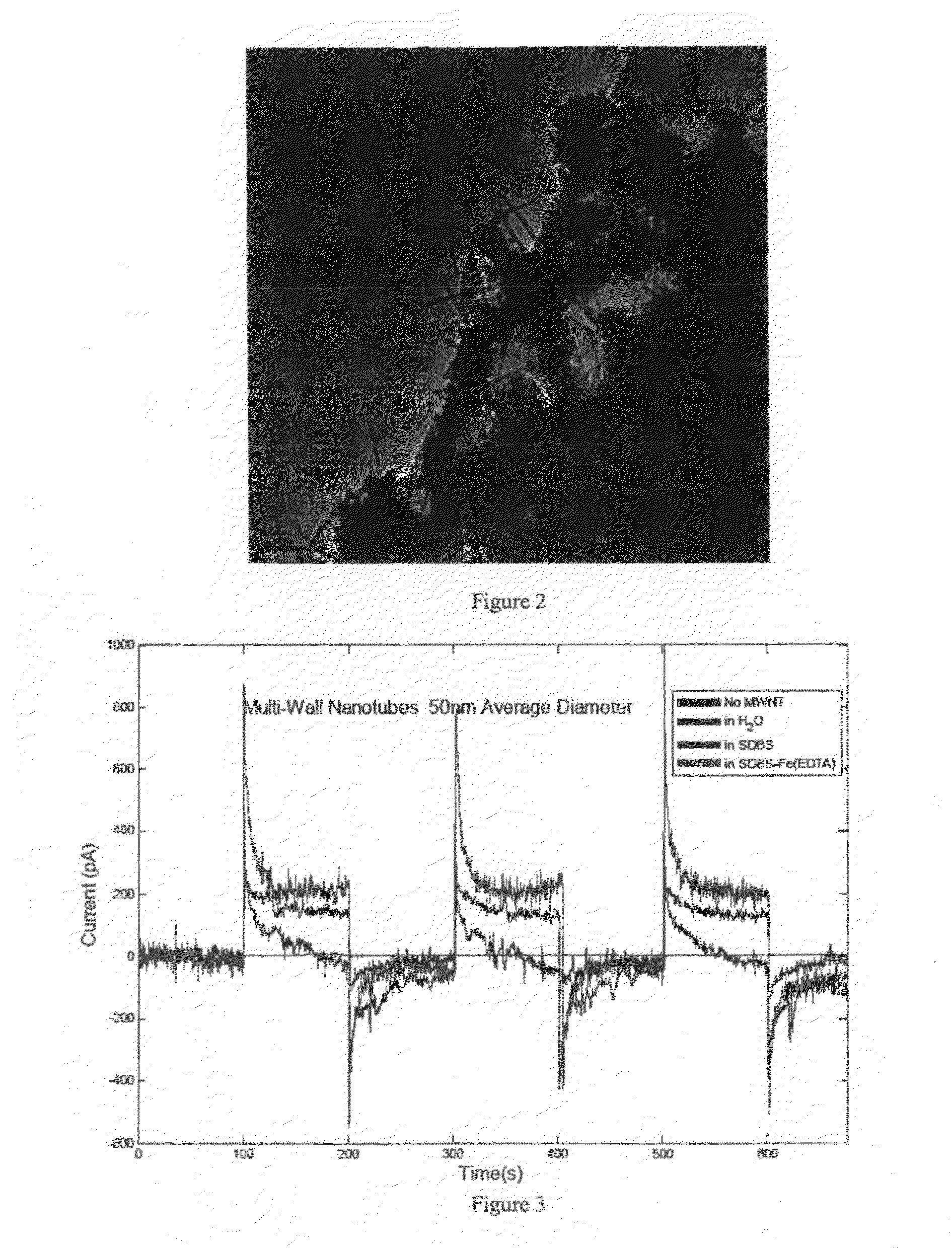Optical Rectification Device and Method of Making Same
- Summary
- Abstract
- Description
- Claims
- Application Information
AI Technical Summary
Problems solved by technology
Method used
Image
Examples
example 1
[0067]This example illustrates rectification using a surfactant.
[0068]The present inventors obtained small DC photocurrents from carbon nanotube electrodes in aqueous electrolytes, demonstrating conversion of light to electricity. The demonstration device described in this example was produced by coating carbon tape (conductive adhesive) with carbon nanotubes; this was affixed to a conductive substrate which served as an electrode. This was immersed in a aqueous electrolyte solution of SDBS (sodium dodecylbenzene sulfonate) and Fe(EDTA)2. SDBS is a common detergent. A gold wire or similar was immersed into the electrolyte, but not directly in contact with the carbon tape or its supporting electrode. Upon irradiation with light, electrons were emitted from the nanotubes into the solution. Electrons were carried to the gold wire, which charged negative; the substrate in contact with the nanotubes charges positive.
[0069]In particular, the present inventors fabricated a photocathode by ...
example 2
A Prophetic Example
[0073]This example illustrates generation of a voltage by a nanoscale antenna.
[0074]The present inventors model the voltage generated at the tip of a nanowire antenna. The present inventors assume that initially the amount of energy stored in the polarized wire is equal to the energy in the incoming photon hv. It is known that the polarization of a conducting wire in an axial electric field is P=γ↑E|L3 / Λ, where the geometrical factor Λ=[24 ln(4L / d)−7] and E is the applied field; L and d are the length and diameter of the rod, respectively. The energy stored is given by the product of electric field and the polarization: D=P E, while the apparent voltage (relative to immediate surroundings) at the tip will be E L / 2. Equating the D is with hv, it is possible to compute the field that would have generated such a dipole, and thus the impressed voltage at the tip of the wire. FIG. 4 shows the results. For example, the present inventors predict that a 10 nm×150 nm anten...
example 3
Another Prophetic Example
[0075]This example illustrates rectification by an dipole bilayer.
[0076]The present inventors model the potential well created by a charged nanotube with a surfactant micelle. The present inventors reasonably assume a surfactant structure as shown in FIG. 5 along with a surfactant anionic charge density of 0.1 C / m2 and a nominal surfactant dipole moment of 20 Debye. It is possible to compute the size of the offset from the bath using Gauss's law to determine the radial electric field at various radii based upon the surface area of the cylindrical surface (or hemi-spherical at the ends) and the enclosed charge.
[0077]From this, it is possible to see that the region between the ionic component layers has a strong electric field. Upon integrating this field, it is possible determine the size of the voltage offset (the depth of the potential well) caused by the ordered dipole SAM. Results were obtained also for cylindrical and spherical symmetry, corresponding to...
PUM
 Login to View More
Login to View More Abstract
Description
Claims
Application Information
 Login to View More
Login to View More - R&D
- Intellectual Property
- Life Sciences
- Materials
- Tech Scout
- Unparalleled Data Quality
- Higher Quality Content
- 60% Fewer Hallucinations
Browse by: Latest US Patents, China's latest patents, Technical Efficacy Thesaurus, Application Domain, Technology Topic, Popular Technical Reports.
© 2025 PatSnap. All rights reserved.Legal|Privacy policy|Modern Slavery Act Transparency Statement|Sitemap|About US| Contact US: help@patsnap.com



